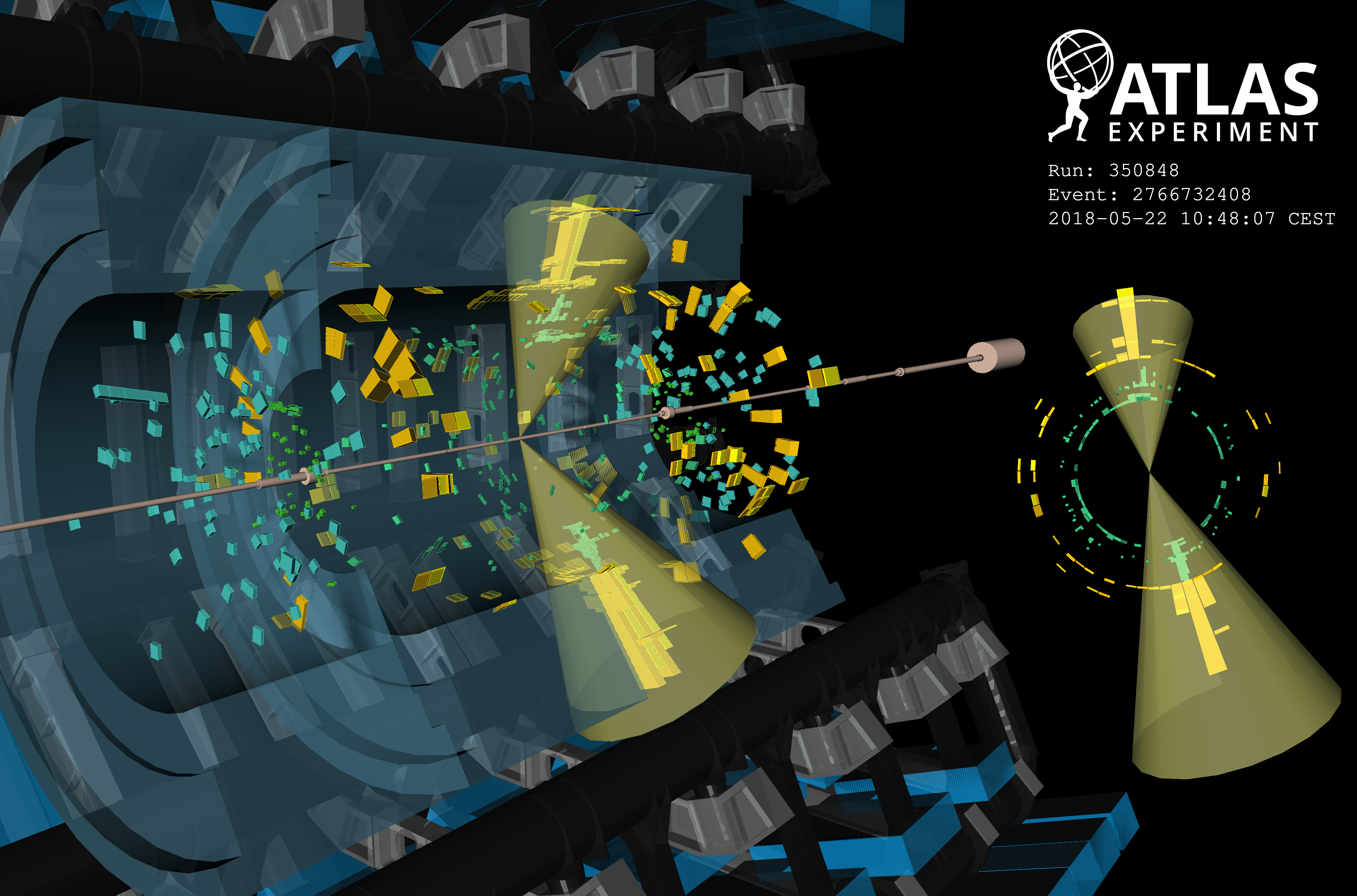Summary of new ATLAS results from BOOST 2023
31 July 2023 | By

The 15th International Workshop on Boosted Object Phenomenology, Reconstruction, Measurements, and Searches at Colliders (BOOST 2023) kicks off today in Lawrence Berkeley National Lab, California (USA). The conference brings together experts from the LHC experiments and the theory community to discuss new approaches for using “jets” of particles in studies of Quantum Chromodynamics (QCD) and searches for physics beyond the Standard Model.
The ATLAS Collaboration will be unveiling several new results at BOOST 2023, including new studies showcasing different applications of machine learning in jet tagging. Key results will be explored in ATLAS Physics Briefings, to be released throughout the conference. Check the BOOST 2023 tag for the latest updates. The full list of new ATLAS results presented at BOOST 2023 is given below.
Latest Physics Briefings
-
Signal and noise: how timing measurements and AI are improving ATLAS event reconstruction, ATLAS Physics Briefing, 1 August 2023
-
Machine learning is revolutionising our understanding of particle “jets”, ATLAS Physics Briefing, 3 August 2023
New ATLAS results presented at BOOST 2023
- New techniques for jet calibration with the ATLAS detector (arXiv:2303.17312, see figures)
- Performance and calibration of quark/gluon jet taggers using 140 fb-1 of proton–proton collisions at 13 TeV with the ATLAS detector (JETM-2020-02)
- Improving topological cluster reconstruction using calorimeter cell timing in ATLAS (ATLAS-CONF-2023-042)
- Tagging boosted W bosons with the Lund jet plane in ATLAS (ATL-PHYS-PUB-2023-017)
- Calibration of topological cell clusters in the ATLAS calorimeters with neural networks (ATL-PHYS-PUB-2023-019)
- Constituent-based W-boson tagging with the ATLAS detector (ATL-PHYS-PUB-2023-020)
- Transformer Neural Networks for Identifying Boosted Higgs Bosons decaying into bb¯ and cc¯ in ATLAS (ATL-PHYS-PUB-2023-021)
- MET Performance in Run 2: Public Plots for BOOST 2023 (JETM-2023-002)
- Comparison of ML algorithms for boosted W boson tagging (JETM-2023-003)
- LAr Cells in Clusters with Timing (ATL-COM-LARG-2023-022)
- Study of ttbb and ttW background modelling for ttH analyses (ATL-PHYS-PUB-2022-026)
Additional New Results
Searches for New Physics with Jets
- Search for non-resonant production of semi-visible jets using Run 2 data in ATLAS (arXiv:2305.18037, see figures)
- Search for dark mesons decaying to top and bottom quarks with the ATLAS detector in 140 fb−1 of proton−proton collisions at 13 TeV (ATLAS-CONF-2023-021)
- Search for top-philic heavy resonances in proton-proton collisions at 13 TeV with the ATLAS detector (arXiv:2304.01678, see figures)
- Search for new phenomena in two-body invariant mass distributions using unsupervised machine learning for anomaly detection at 13 TeV with the ATLAS detector (arXiv:2307.01612, see figures)
- Search for the Zγ decay mode of new high-mass resonances in proton-proton collisions at 13 TeV with the ATLAS detector (ATLAS-CONF-2023-030)
- Pursuit of paired dijet resonances in the Run 2 dataset with ATLAS (arXiv:2307.14944, see images)
Jet Measurements
- Measurement of jet substructure in boosted tt¯events with the ATLAS detector using 140 fb−1 of 13 TeV proton-proton collisions (ATLAS-CONF-2023-027)
- Measurements of multijet event isotropies using optimal transport with the ATLAS detector (arXiv:2305.16930, see figures)
- Measurement of substructure-dependent jet suppression in Pb+Pb collisions at 5.02 TeV with the ATLAS detector (arXiv:2211.11470, see figures)
- Measurement of suppression of large-radius jets and its dependence on substructure in Pb+Pb collisions at 5.02 TeV with the ATLAS detector (arXiv:2301.05606, see figures)
- Probing the CP nature of the top-Higgs Yukawa coupling in tt¯H and tH events with H→bb¯ decays using the ATLAS detector at the LHC (arXiv:2303.05974, see figures)



